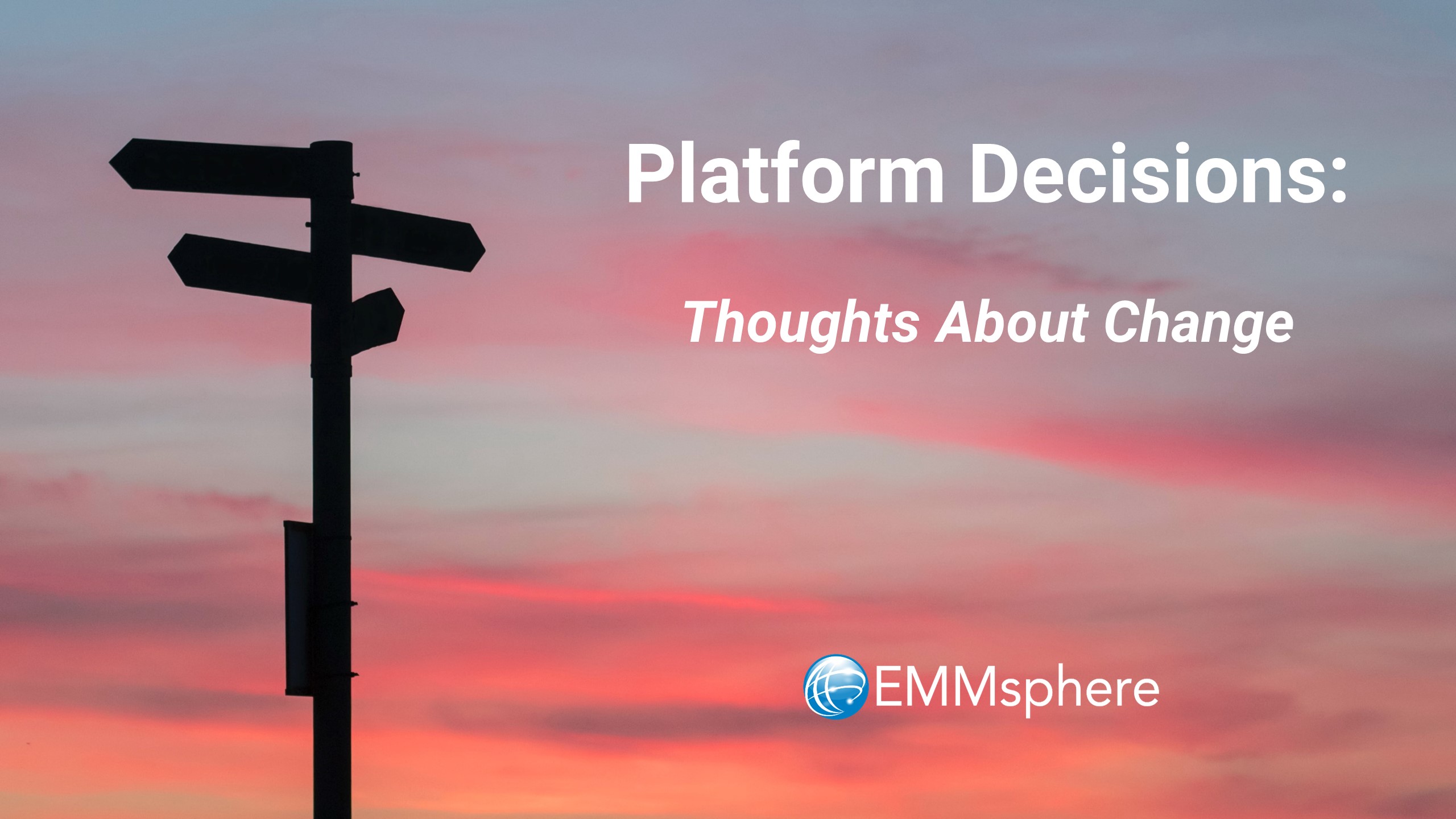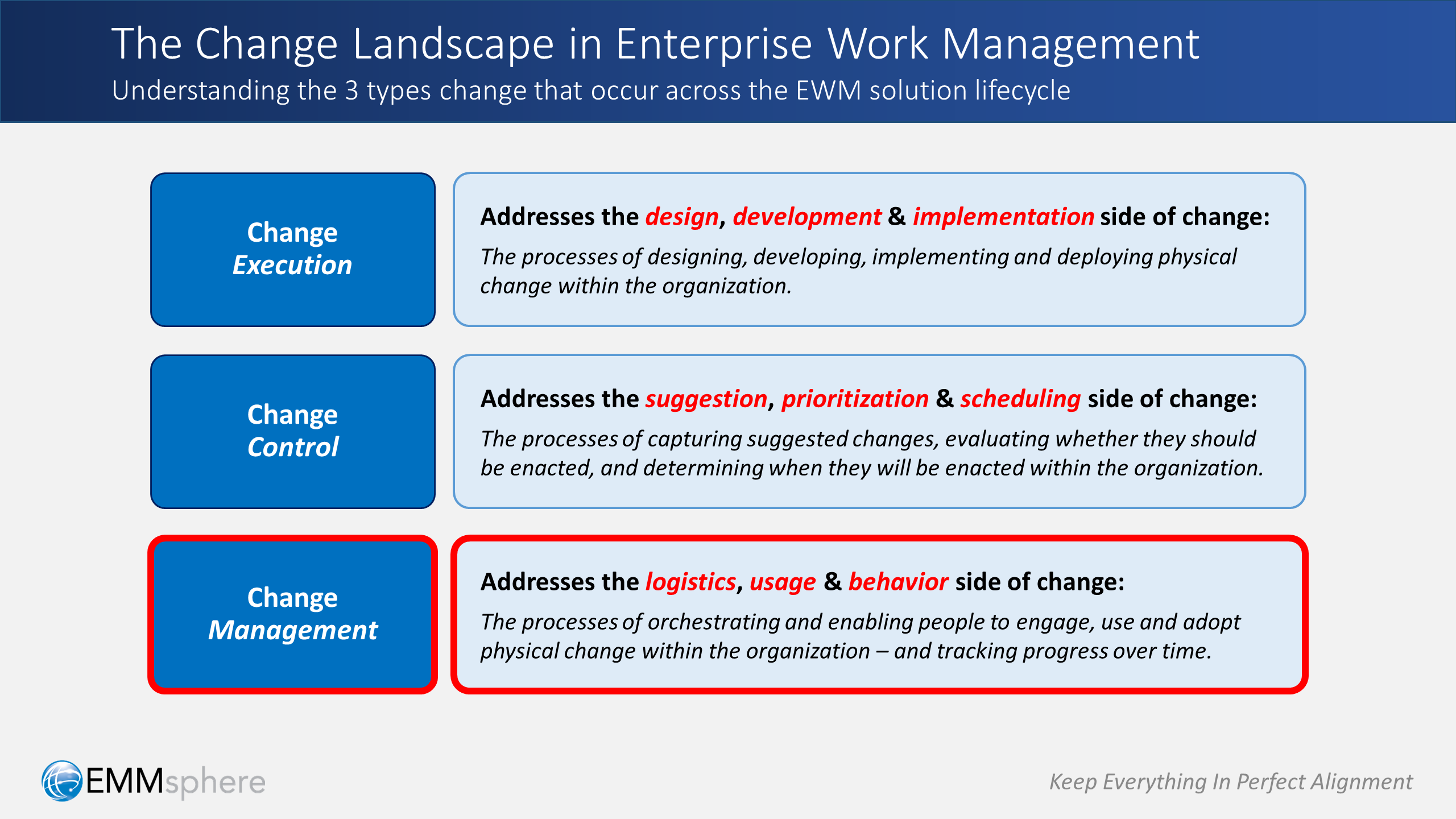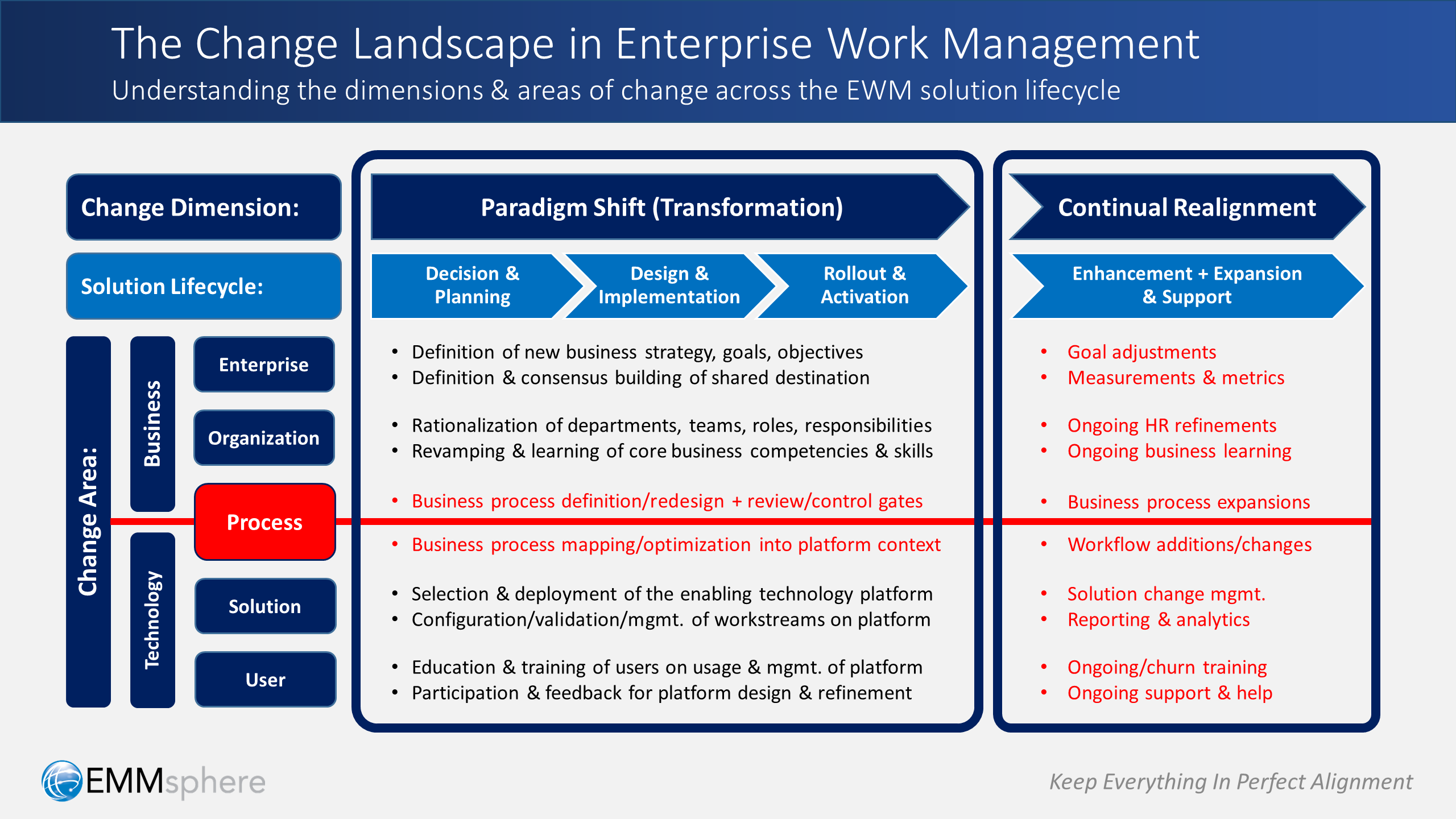
The Three Areas of Change
Let’s spend a few moments on how we might actually make a platform switch. Or, in other words: how can we manage a platform switch in a way that captures the ROI promise?
Managing change is an enormously broad topic, with tons of academic literature and research devoted to it. And, when organizations decide to embark on a new platform, they almost always start thinking about change management.
But what does that mean in our world of enterprise work management? Well, at least three different things — and it helps to keep theme separate.

Change Execution will certainly be critical, and assembling the right team to design, develop and implement the switch solution is absolutely crucial.
Change Control will also be a key factor for success, to make sure ideas and enhancements are prioritized for action along the way.
Change Management, however — meaning the logistics, usage and behavior side of change — may well be the most important of the three types of change shown above, maybe because it’s often the least understood.
Change Management in Enterprise Work Management

What we mean by “it’s often the least understood” is that when it comes to change management, organizations usually focus their efforts on the most obvious areas, such as training and communication programs. And yes, of course we’ll need those. But managing change, especially in our world of enterprise work management, involves much more than that.
First of all, it entails a paradigm shift in the way an organization works, which cuts across all phases of solution planning, implementation and rollout.
This means managing change on the business side, in terms of strategy, objectives, teams, roles and responsibilities.
It also means managing change on the technology side, in terms of the physical deployment of the solution, and the user training and education that goes along with that.
But, there are two other areas of change that don’t always get the attention they deserve — probably because they’re actually very difficult to do.
Process-Related Change
The first is process-related change, and by this we don’t mean process re-engineering per se.
It’s really about mapping those redesigned business processes into the specific context of the underlying platform — understanding what works, and what doesn’t — and feeding that learning back into the process design.
In effect, there should be a two-way feedback loop between business process and technical workflow, where we fit the business within the specific context of the platform — and take advantage the platform’s specific capabilities and leverage those across the business.
Continual Realignment
The second area that deserves attention — and really hits home for all of us at EMMsphere — is the continual realignment needed to manage the never-ending enhancement and expansion that occurs after the solution goes live.
As they say, there is no finish line.
And — if we don’t continually realign the solution as change inevitably happens, we’ll end up right back where we started our platform decision: with low adoption, little viability, and in desperate need to make yet another switch.
Closing Thoughts
In this post, we don’t intend to cover the full array of considerations involved in change management. Although, as a firm, we certainly offer a tremendous body of expertise and experience across the full range of change management.
However, for the purposes of the discussion here regarding platform decisions, there is one particular change-related point that we always emphasize strongly: context matters — and it matters most with respect to process.
Being able to map business process into the context of the underlying platform’s capabilities, and in turn leveraging the platform’s capabilities back into business process design itself — is, in our view, the key to successfully managing change in enterprise work management.
Next Steps
We’ve hardly scratched the surface — so much goes into a carefully considered platform decision! Don’t worry, we’ve got you covered. And, as a next step, we invite you to check out some of our other posts:
- Platform Decisions: When & How to Build a Case
- Platform Decisions: Evaluating Fit
- Platform Decisions: Assessing Viability
- Platform Decisions: Estimating Impact
- Platform Decisions: Testing Assumptions
- Platform Decisions: Differentiators & Productivity Levers
- Platform Decisions: Thoughts About Change
- Platform Decisions: Getting All The Juice
Leave a Reply